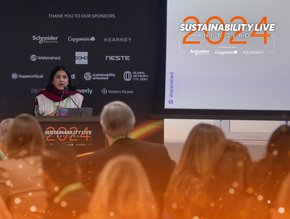LafargeHolcim, GE and COBOD partner on advanced turbines

LafargeHolcim has released details of a new project it is working on with GE Renewable Energy and COBOD: super-tall turbine towers.
With wind turbines generally constructed from steel and precast concrete to a height of approximately 100m, the partners’ work is expected to yield a tower of 200m.
Capable of capturing stronger winds due to its increased height, the new type of wind turbine will be far more cost-effective and able to generate more power relative to shorter models. The innovation that makes this possible is a large 3D printed concrete base.
The advantages of a taller wind turbine are made apparent by LafargeHolcim: an 80m tower could yield 15.1 GWh of power annually, whereas a tower doubled in height could result in up to 33% more power at 20.2 GWh.
Pooling talent
With all three companies committed to the idea of improving renewable energy generation, each will be contributing from their own particular area of expertise:
- GE will provide its design, manufacturing and marketing advice for the new turbines.
- COBOD (Construction of Buildings on Demand) has the 3D printing and advanced robotics technology necessary for constructing the concrete base.
- LafargeHolcim will create the specialised concrete used for 3D printing the base, as well as its processing and application.
Edelio Bermejo, Head of R&D for LafargeHolcim, expanded on the utility of 3D printing in the construction:
“Concrete 3D printing is a very promising technology for us, as its incredible design flexibility expands the realm of construction possibilities.
“Being both a user and promoter of clean energy, we are delighted to be putting our material and design expertise to work in this groundbreaking project, enabling cost-efficient construction of tall wind turbine towers and accelerating access to renewable energy.”
COBOD, which made history in 2017 by constructing the first building using 3D printing technology in Europe, stated that it was excited and proud to work with two leading companies in the energy sector. Henrik Lund-Nielsen, Founder, said:
“With our groundbreaking 3D printing technology combined with the competence and resources of our partners, we are convinced that this disruptive move within the wind turbines industry will help drive lower costs and faster execution times, to benefit customers and lower the CO2 footprint from the production of energy.”
Finally, Matteo Belluci Advanced Manufacturing Technology Leader for GE Renewable Energy, predicted that the success of the trio’s endeavour could result in a major disruption to the renewable energy sector.
“3D printing is in GE’s DNA and we believe that Large Format Additive Manufacturing will bring disruptive potential to the Wind Industry. Concrete printing has advanced significantly over the last five years and we believe is getting closer to have real application in the industrial world.
“We are committed to taking full advantage of this technology both from the design flexibility it allows as well as for the logistic simplification it enables on such massive components,” he concluded.






